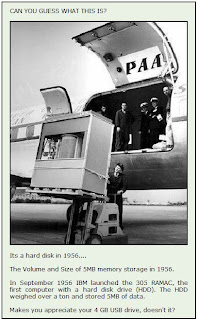Worlds First Computer(ENIAC)
In 1936 British mathematician Alan Turing proposed the idea of a machine that could process equations without human direction. The machine (now known as a Turing machine) resembled an automatic typewriter that used symbols for math and logic instead of letters. Turing intended the device to be used as a "universal machine" that could be programmed to duplicate the function of any other existing machine. Turing's machine was the theoretical precursor to the modern digital computer.
In the 1930s American mathematician Howard Aiken developed the Mark I calculating machine, which was built by IBM. This electronic calculating machine used relays and electromagnetic components to replace mechanical components. In later machines, Aiken used vacuum tubes and solid state transistors (tiny electrical switches) to manipulate the binary numbers. Aiken also introduced computers to universities by establishing the first computer science program at Harvard University. Aiken never trusted the concept of storing a program within the computer. Instead his computer had to read instructions from punched cards.
Worlds First Computer Hard Disk
The IBM 305 RAMAC was the first commercial computer that used a moving head hard disk drive (magnetic disk storage) for secondary storage.
IBM introduced the storage unit on September 4, 1956 before unveiling the entire computer nine days later on September 13. RAMAC stood for "Random Access Method of Accounting and Control". Its design was motivated by the need to replace the punch card tub file used by most businesses at the time. The first RAMAC to be used in the US auto industry was installed at Chrysler's MOPAR Division in 1957. It replaced a huge tub file which was part of MOPAR's parts inventory control and order processing system. The 305 was one of the last vacuum tube computers that IBM built. The IBM 350 disk system stored 5 million 8-bit (7-bits plus 1 odd parity bit) characters (about 4.4 MB). It had fifty 24-inch diameter disks. Two independent access arms moved up and down to select a disk and in and out to select a recording track, all under servo control. Average time to locate a single record was 600 milliseconds. Several improved models were added in the 1950s. The IBM RAMAC 305 system with 350 disk storage leased for $3,200 per month in 1957 dollars, equivalent to a purchase price of about $160,000. More than 1000 systems were built. Production ended in 1961, the RAMAC computer became obsolete in 1962 when the IBM 1405 Disk Storage Unit for the IBM 1401 was introduced, and the 305 was withdrawn in 1969.
Worlds First Computer Mouse
40 years ago a patent was applied for which described a wooden shell with two metal wheels. The device quickly received the nickname of a mouse due to it having a tail (wire) coming out of it. The patent described an X-Y position indicator for a display system.






No comments:
Post a Comment